Calif. Court Perks All Over the Map
California Law - Cal Law- The Recorder by Cheryl Miller - April 6, 2009
Faced with staggering budget cuts and multimillion-dollar cost overruns, California's judiciary leaders this spring will consider employee layoffs, furloughs and cutbacks to traditionally sacrosanct programs like courthouse security. But for judges in 19 courts across the state, the scenario won't be nearly so bleak. Court executives there will dip into their operating budgets and spend a combined $3 million on judicial perks ranging from car allowances to family gym memberships. And no matter how bad the judiciary's cash crunch grows, no one -- save a reluctant Legislature -- can strip away the judges' court-provided benefits. It's the law.
Adopted amid a contentious, marathon budget-fixing session in February, Senate Bill 11XX authorized counties to continue paying employee benefits to judges on top of the full range of extras the state already offers. Most of the public scrutiny focused on Los Angeles County, which offers local jurists an extra $46,000 in benefits annually. Less noticed was a provision in the bill that also requires courts that provide supplemental judicial benefits to continue doing so. And unlike counties, courts can't opt out of the payments. "When bills come up for a floor vote without a lot of committee review, they're often passed off as routine," said Assemblyman Chuck DeVore, R-Irvine, one of only a handful of legislators to vote against SB 11XX. "And lawmakers are not in the habit of doing a lot of oversight of the judiciary," DeVore said. California pays all trial court judges $178,789 a year plus a benefit package that includes health, dental and vision coverage, life insurance, a pension plan and a self-funded retirement account. Los Angeles and 11 other counties pay for additional perks . Of the 19 courts that offer their own supplemental benefits, many provide more generous health plans that include more local doctors. Others match what county executives receive, even if it appears to duplicate what the state already offers.
See which California courts give their judges car allowances, gym memberships and other benefits on top of those provided by the state in our interactive map. The benefits provided by small courts are often limited and relatively inexpensive. Mariposa County Superior Court, for example, pays less than $500 a year for life insurance policies for its two judges. Placer offers its judges life and disability coverage for just under $1,000 a year. But the perks in other courts can be substantial. San Diego pays each of its judges $572 a month for car expenses. Medical care subsidies run up to $855 a month per judge. The court's total bill for judicial extras is $1.9 million annually. In Nevada County, the court pays $50 a month toward each judge's pension. Judges also receive life insurance and a stipend for cell phones and personal digital assistants like BlackBerrys. In Napa, the court picks up the extra cost -- about $232 per month per judge -- of enrolling in the county's health insurance instead of the state's. Judges there also receive extra "management pay," a life insurance policy and, if they meet certain criteria, half the cost of their gym memberships.
"Currently, four of our judges are members of a local health club and receive the benefit due to their regular attendance and participation in the health club activities," Napa Court Executive Officer Stephen Bouch said in an e-mail. "This may be a significant contributor to our extraordinarily low incidence of judicial absence due to sickness." Tulare County Superior Court offers gym memberships to its judges, too, and it also covers health club costs for judges' family members. The benefits' combined cost of just under $3 million is a tiny fraction of the judiciary's $2 billion annual budget. And eliminating the extras would hardly make a dent in the $100 million in spending that state leaders are asking the judiciary to cut this year. But their continued cost comes at a time when judicial leaders have said they don't have the money to launch a long-awaited case management system or to expand oversight of the state's historically troubled conservatorship caseload. "That doesn't pass the smell test," DeVore said. Many of the court benefits are legacies of the days when counties, not the state, ran local courthouses.
"For whatever reason, in some cases the funding for the payment of benefits that existed when the courts were with the counties was written into courts' budgets and remained there," said William Vickrey, the Administrative Office of the Courts' administrative director. "There's a legacy of these very piecemeal benefits around the state, and the state hasn't provided any pattern for us to determine what is and is not a reasonable level of benefits." That piecemeal legacy has created a de facto multi-tier salary structure that bears no relation to a judge's caseload, experience or cost of living. Nor does it reflect the notion that all judges serve equally in one unified state branch. It means that Kings County judges receive a deferred compensation plan, medical cost reimbursements and disability coverage while their counterparts in Santa Cruz do not.
Alex Calvo, executive officer of the Santa Cruz County Superior Court, said bench officers there "made a conscious decision" to accept only state-provided benefits when the state assumed funding for all courts after 1997. "It's never been an issue here," Calvo said. "One of the characteristics of the Santa Cruz legal community is a real sense of public service." The lack of extra perks, from either the county or the court, hasn't hurt judicial recruitment efforts, either, Calvo said, despite the region's high cost of living. "When we've had openings, we've always had a large pool of attorneys who have expressed an interest in wanting to become a judge," he said. Vickrey said any attempt to eliminate court-paid benefits would unfairly target judges who took the bench expecting to receive them.
And, in reality, it's unlikely any legislator would try to take away the extra perks. News that Los Angeles County Superior Court leaders spent $10,000 a month in taxpayer money on a lobbyist to draft and secure votes for SB 11XX hardly raised an eyebrow in the Legislature. The California Judges Association employs a lobbyist to promote its legislative interests, and its members can be counted on to pigeonhole local lawmakers. While DeVore served on a subcommittee that reviews the judiciary budget, "I certainly was on the receiving end of some friendly visits by judges," he said. Legislators, DeVore added, are often willing to defer to judges on running the courts.
"It's kind of the last bastion of unquestioned governance," he said. "They like to jealously guard their prerogatives. I think they're often in a position of saying, 'Look, let us oversee our own house.'" So what's to stop a local bench that doesn't receive benefits now from setting aside some of the court's budget for, say, judicial car allowances or gym memberships? The new law, Vickrey said. "There is nothing that provides constitutional or statutory authority to the courts to provide any new benefits," he said. "That was clearly understood at the time [SB 11XX] was passed." Changes to the disparate benefits system may be coming, though. The Legislature has asked the Judicial Council to report back on "benefits inconsistencies" by the end of the year.
MLK said: "Injustice Anywhere is a Threat to Justice Everywhere"
End Corruption in the Courts!
Court employee, judge or citizen - Report Corruption in any Court Today !! As of June 15, 2016, we've received over 142,500 tips...KEEP THEM COMING !! Email: CorruptCourts@gmail.com
Most Read Stories
- Tembeckjian's Corrupt Judicial 'Ethics' Commission Out of Control
- As NY Judges' Pay Fiasco Grows, Judicial 'Ethics' Chief Enjoys Public-Paid Perks
- New York Judges Disgraced Again
- Wall Street Journal: When our Trusted Officials Lie
- Massive Attorney Conflict in Madoff Scam
- FBI Probes Threats on Federal Witnesses in New York Ethics Scandal
- Federal Judge: "But you destroyed the faith of the people in their government."
- Attorney Gives New Meaning to Oral Argument
- Wannabe Judge Attorney Writes About Ethical Dilemmas SHE Failed to Report
- 3 Judges Covered Crony's 9/11 Donation Fraud
- Former NY State Chief Court Clerk Sues Judges in Federal Court
- Concealing the Truth at the Attorney Ethics Committee
- NY Ethics Scandal Tied to International Espionage Scheme
- Westchester Surrogate's Court's Dastardly Deeds
Tuesday, April 7, 2009
Consolation: Judicial Entitlement and Abuse Everywhere
Subscribe to:
Post Comments (Atom)
Blog Archive
-
▼
2009
(554)
-
▼
April
(55)
- Anderson's $10 Million Lawsuit Proceeds Against Co...
- Administrative Judge Francis A. Nicolai Stepping Down
- Anderson Advances, Federal Jury to Hear 'Ethics' C...
- 'Officer of the Court' Marc Dreier to Plead Guilty
- New York's Prosecutor Envy, Expanding
- The New Brown Bag: Judge Arrested in Alleged Bond ...
- Judge Voices Regrets Over Selling His Soul
- Fax Press Contacts Today !! Tell Them to Advertise...
- Let Your Voice Be Heard by NY's Judiciary Committee
- Bribe-Taking Judge Haunts Justice 23 Years Later
- Report: NYS Court System in Sad Crisis, Desperate
- Fiasco Continues With Ex-Lawyer Who Brought Down N...
- Corrupt Judicial Ethics Oversight Fuels Texas-Styl...
- Dripping Blood Brings Call For AG Andrew Cuomo's L...
- Indicted on Sex and Ethics Charges, Judge Pleads N...
- Dreier Straw Man Got Big Bucks in Lawyer Fraud
- Manhattan Lawyer Involved in Murder-Suicide, Say P...
- Our 'Officers of the Courts' Need Help
- Corrupt Court Blog Denounces Physical Threats and ...
- Harm Is From Cover-Ups and Corruption, Not Human E...
- New York State: The Kickback Capital
- WSJ: It's Rare for Prosecutors to Get the Book Thr...
- More Changes From NYS Chief Judge Jonathan Lippman
- New York's Cesspool Widens
- Mr. President: Please Create a Department of Publi...
- Will The U.S. Supreme Court Ever Address the Natio...
- DA Office Fumbles as Mortgage Frauds Score
- Another NY Good Ole Boy Charged in Pay-To-Play
- Justice NOT Served, by Process Server
- Happy Birthday to Frank...
- Jury Finds SDNY Federal Magistrate Judge Guilty of...
- GOP Lawyer Beats Head-Butt Rap
- Federal Complaint Accuses District Attorney of Cov...
- More Accountability Coming to Administration of NY...
- Another Promising Step in Reversing NY's Court Cor...
- NEWSWEEK: When Judges Behave Badly
- Newly Established Financial Crimes and Public Corr...
- More OCA Dead Wood to Go, Now Jan Plumadore
- More Fun With Dead People's Money
- Attorney Probed in Threats Against Judges, Lawyer
- Administrative Changes For New York City Courts
- Federal Judge Orders Probe of Prosecutorial Miscon...
- Fox News on Corrupt Court Guardians
- Cuomo's Brilliant; Starts Going After Corrupt "Mid...
- Federal Prosecutor Slams Two Crooked Fen-Phen Lawyers
- Feds: Judges Used System to Enrich Selves
- Consolation: Judicial Entitlement and Abuse Everyw...
- JUDGE OF THE DAY: Federal Magistrate Valerie Cooke...
- Attorneys Who Coach Fraud Like Judge Who Knew Whic...
- Ex-attorney gets maximum sentence in fatal hit-run
- Madoff's Brother Gets Some Money, and Lesson, from...
- Honest Judges Deserve Raises
- Commission on Judicial Conduct Targets Farm Hands,...
- Despite Red Flags About Judges, a Kickback Scheme ...
- Lawyer's Mistake Thinking Client Didn't Mind He Sc...
-
▼
April
(55)
See Video of Senator John L. Sampson's 1st Hearing on Court 'Ethics' Corruption
The first hearing, held in Albany on June 8, 2009 hearing is on two videos:
Video of 1st Hearing on Court 'Ethics' Corruption
The June 8, 2009 hearing is on two videos:









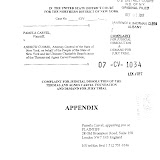


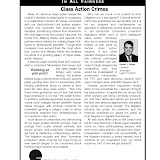

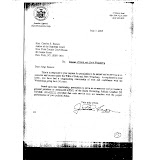
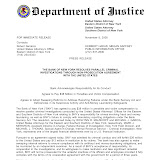
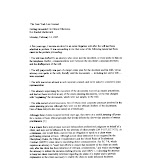

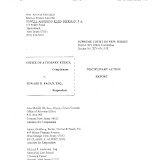
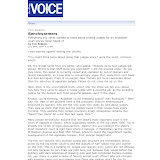




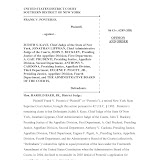
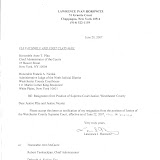
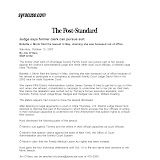
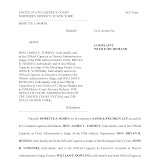

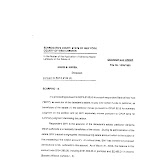
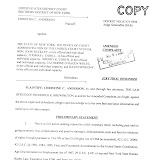

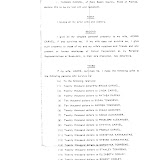

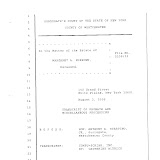


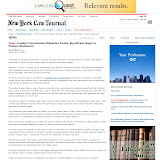
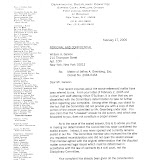
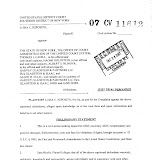
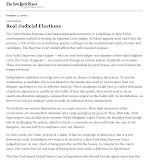
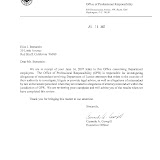
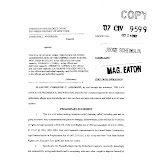
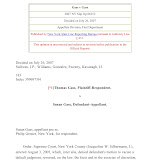
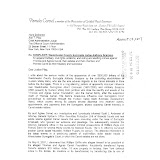

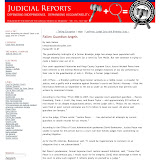


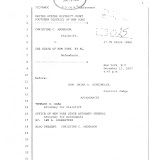
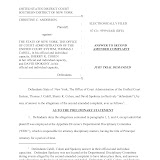
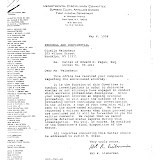
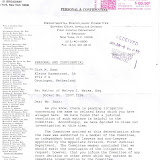
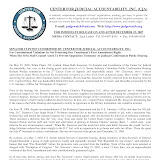
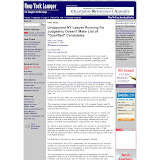
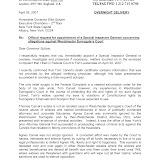
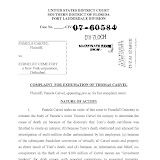
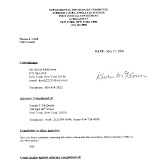
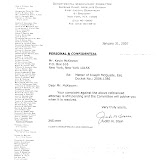
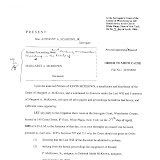
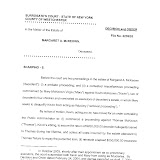

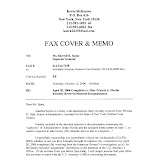
3 comments:
I feel a lot better knowing that court corruption is just limited to New York. What's the President going to do about this NATIONAL problem??!!??
$5000 robe maintenance allowance in NY state...which we just learned about and have no clue what else OCA has hidden in their compensation packages.
USA should start with sanitizing the NY court system first...the biggest and certainly the baddest...and the rest will follow with ease!
One of the characteristics of the Santa Cruz legal community is a real sense of public service
What a load of crap.
Santa Cruz is a crooked town.
Post a Comment